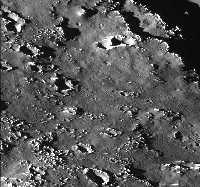This is an image of the surface of Callisto.
Click on image for full size
Image from: NASA's Galileo spacecraft
Does Callisto have a Surface in Motion?
No signs of crustal movements have been seen on the surface of Callisto! The surface of Callisto was carefully examined for signs of faulting and fracture. These would have provided evidence of pushing and shoving of the crust of Callisto from processes inside.
Examination of the surface of Callisto shows only that there has been gradual slumping, or "relaxation" of the craters, and what is termed "sublimation-erosion" of the surface.
This type of surface is perhaps unique in the solar system. It is certainly a different type of surface that either that ofGanymede or Europa. (The other major moon of Jupiter, Io, exhibits volcanism over the entire surface.) The difference may have to do with the lack of heat in the interior of Callisto.
You might also be interested in:
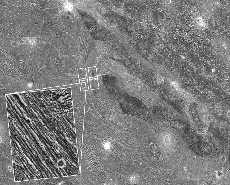
There has been no icy volcanism on Ganymede, nor continental drift, but it does seem that there have been movements of the surface. Examination of the surface of Ganymede reveals many kinds of faulting.
...more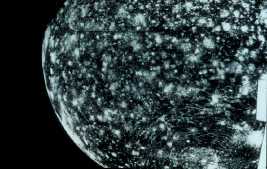
The surface of Callisto is deeply pockmarked with craters. It looks to be perhaps the most severely cratered body in the solar system. There are also very large craters to be found there. The severity
...more
Amalthea was discovered by E Barnard in 1872. Of the 17 moons it is the 3rd closest to Jupiter, with a standoff distance of 181,300 km. Amalthea is about the size of a county or small state, and is just
...more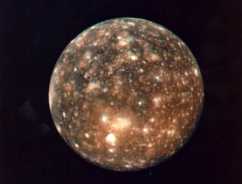
Callisto was first discovered by Galileo in 1610, making it one of the Galilean Satellites. Of the 60 moons it is the 8th closest to Jupiter, with a standoff distance of 1,070,000 km. It is the 2nd largest
...more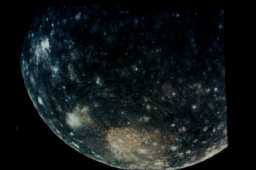
The insides of most of the moons and planets separated while they were forming out of the primitive solar nebula. Measurements by the Galileo spacecraft have been shown that Callisto is the same inside
...more
Many examples of the differing types of surface are shown in this image. In the foreground is a huge impact crater, which extends for almost an entire hemisphere on the surface. This crater may be compared
...more
Europa was first discovered by Galileo in 1610, making it one of the Galilean Satellites. It is Jupiter's 4th largest moon, 670,900 km from Jupiter. With a diameter that is about half the distance across
...more


